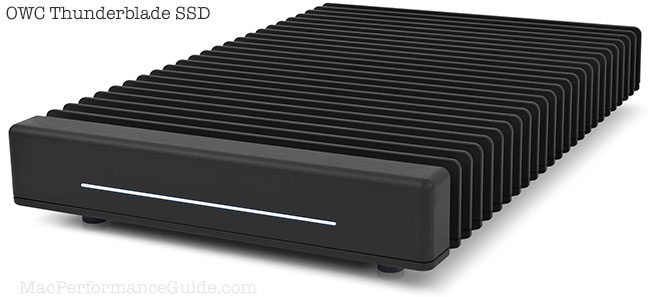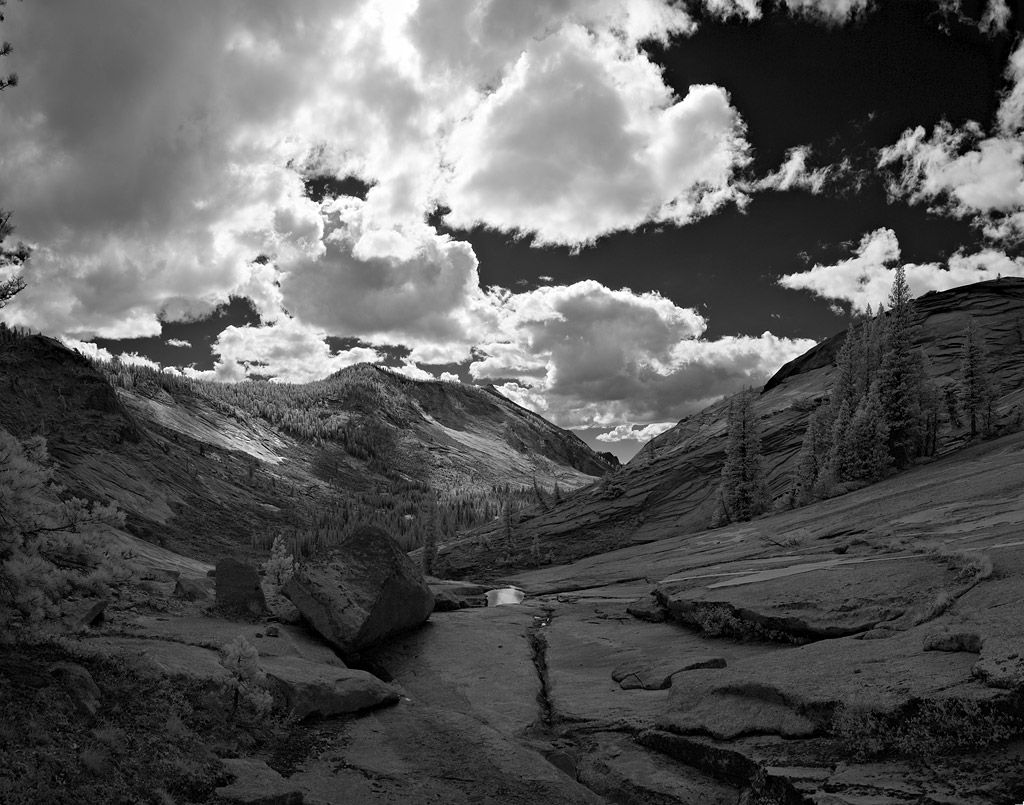
|

|

|

|

|

|
Zeiss ZF Lenses for Infrared
Related: digital sensor, filters, flowers, focusing, infrared, spectral transmission, Zeiss, Zeiss 25mm f/2.8 Distagon, Zeiss 85mm f/1.4 Planar, Zeiss Distagon, Zeiss DSLR Lenses

Contents
Introduction
Please see Guide to Zeiss for in-depth reviews and discussion of Zeiss lenses for Canon and Nikon DSLRs.
Updated: November 7, 2007
Zeiss is evaluating the market potential for a variant of their ZF lens line with coatings optimized for infrared photography. The primary target for these special lenses is for commercial and industrial use (surveillance, machine vision, etc). A secondary target is infrared photography which includes fine-art, wedding landscape, etc. This secondary market is more difficult for Zeiss to assess as an opportunity. Zeiss asked me to be clear on the intent:
These are prototypes. Zeiss is testing the feasibility of using these lenses to improve light transmission (speed) into the NIR and IR spectrum and to minimize/eliminate the occurrence of hot spots - or areas of unequal light transmission (resulting in uneven density in the final image). Based on the results of these tests, customer feedback and estimates of potential sales volume, we will make the decision to proceed with the project.
If you wish to express your support for this project, please contact Rich Schleuning at Zeiss (but please CC info@diglloyd.com as “comment on Zeiss ZF infrared prototype lenses”.
(Sorry, email is not a hyperlink in order to thwart spammers)
Based on my tests, I am very excited about the ZF infrared-specific prototypes, and I hope that Zeiss proceeds with this project. Hot spots in particular are a serious problem with infrared, and Zeiss seems to have eliminated that issue with the two prototypes I have been testing.
The prototype lenses
Zeiss USA has loaned me the ZF 25mm f/2.8 IR-Distagon and the 85mm f/1.4 IR-Distagon (the nomenclature “IR-Distagon” is mine, not necessarily that of Zeiss). I have these lenses for a very limited time, but I’ve now done enough shooting to satisfy myself of their very useful performance.
Except for slightly different colored lens coatings and an “IR” engraved on the front, these lenses are indistinguishable to the eye from the normal production samples. It would be a nice touch if Zeiss added a red ring around the lens body to distinguish them from the non-IR versions (the author applies tape to distinguish them at a glance).
Spectral transmission
Be sure to see the Filters pages.
Spectral transmission charts (below) show just how much improvement the infrared-specific coatings offer. As might be expected, the wide-angle 25mm f/2.8 Distagon shows the most improvement, and the 85mm f/1.4 Planar shows more moderate improvements. But spectral transmission doesn’t tell the whole store—see Hot spots.
Not specified is where the increased transmission has been measured. Field testing using the Canon EOS 5D-IR (an EOS 5D modified by maxmax.com for infrared use), shows that at the center of the frame, the difference in exposure is quite modest. It is away from the optical center that the dramatic differences are seen, thus accounting for hot spots as well as non-uniform brightness and color rendition with standard lenses.
The charts below are courtesy of Zeiss, used with permission. The light red shading was added by the author, and represents the portion of the spectral band commonly designated as infrared.
The author’s Canon EOS 5D-IR has been modified to use an internal 715nm cutoff filter by maxmax.com, with 0% transmission at about 680nm and 100% transmission from 750-1100nm.
25 Distagon spectral transmission
Spectral transmission of the 25 IR-Distagon enhances long-wave two stop improvement at 1000nm.

85 Planar spectral transmission
The transmission improvement in the IR band is less pronounced with the 85 Planar, but still about 2/3 stop at 1000nm.

Sharpness
The author’s impression so far, based on comparing the production vs prototype lenses is that results with the prototype lenses are less sharp than with the production lenses. This apparent difference has not been confirmed with rigorous testing, but all A/B comparisons made to date confirm it, both with the 25mm f/2.8 Distagon and the 85mm f/1.4 Planar.
Sharpness differences—theory
The prototype lenses transmit much more infrared out to 1000nm. Thus, infrared light from 700-1000+ nanometers is seen more or less in equal intensity, as compared with the production lenses, which increasingly attenuate infrared towards 1000nm. Because longer wavelengths do not focus at the same distance as shorter ones, a blurring effect results from light at 700nm focusing at a significantly different distance than at 1000nm—yet the sensor sees all wavelengths.
In addition, diffraction becomes more of an issue with longer wavelengths, so stopping down to f/11 or f/16 helps compensate for the focus difference, but diffraction reduces the contrast and resolution especially at the 1000nm wavelengths.
To make a truly outstanding infrared lens, a manufacturer would need to correct the skewed focusing of light in the 700-1000nm range. A few exotic and very expensive lenses do this; in fact Zeiss once offered the CFE 250mm f/5.6 Hasselblad Sonnar Super Achromat. In short, it’s not just about the lens coatings, its about chromatic errors. Unfortunately, such exotic designs are very expensive to build.
The 25mm f/2.8 Distagon is not fully corrected for chromatic aberrations even in the visible light range, so it’s unreasonable to expect that it would be well-corrected for the 700-1000nm range, where chromatic errors become even more pronounced. Especially with wide angles, chromatic aberrations (color fringing) are difficult to correct fully without expensive designs and optical glasses. However, even the 85mm f/1.4 Planar seems affected by the sharpness issue. Unfortunately, no prototype of the 50mm f/2 Makro Planar or 100mm f/2 Makro Planar was available; those lenses reputedly have “low dispersion” glass to eliminate chromatic errors.
Hot spots—problem solved
Excepting backfocus (focusing behind the desired plane), the #1 problem with most optics used for infrared photography is that of hot spots, a central bright area that increases in intensity as the lens is stopped down. Hot spots are a form of flare which can be extremely difficult to correct in post-processing. Modern lens coatings tend to cause hot spots in infrared. Canon’s coatings seems especially prone to it, with Nikon’s coatings less so. The standard Zeiss coatings on the ZF line are also prone to hot spots. In addition to lens coatings, hot spots also are an interaction between the optical design and the highly-reflective digital sensor.
Lens coatings optimized for color photography (400 - 650nm) often severely attenuate infrared away from the optical center, resulting in hot spots and strongly different color rendition ranging from blue in the center to yellow towards the corners (variation depends on the camera/sensor, lens and processing of the image).
25mm f/2.8 Distagon hot spot — production vs prototype
Numerous test shots demonstrate that the 25mm f/2.8 IR-Distagon is free of hot spots even at f/22, a terrific performance unmatched by any lens in its focal length range from Canon or Nikon (the author has tested over 60 lenses from Canon and Nikon). Even into the sun, consistently uniform illumination is maintained across the frame (excluding the expected vignetting wide open of course).
Mouse over the example below to see the dramatic difference between the standard 25mm Distagon and the prototype 25mm IR-Distagon. The normal production lens shows a blue hot spot at center, and increasingly yellow color rendition towards the corners (as well as attenuated brightness). [If the mouse-over doesn’t work, click the image to see both images at a larger size side-by-side].
While the subject matter in this particular example masks the hot spot reasonably well (and could even be considered

Mouse over/out to see production vs prototype lens results
85mm f/1.4 Planar hot spot — production vs prototype
The 85mm focal length is well-served for infrared use by Nikon’s 85mm f/2.8D PC-Micro-Nikkor, a lens which in spite of being designed for color photography offers the most outstanding infrared performance available from Canon or Nikon (in terms of both hot spots and sharpness). Or so the author has found in testing.
Fortunately, the Zeiss 85mm f/1.4 Distagon appears to offer at least as good performance as the Nikon offering in terms of hot spots (based on the author’s experience, a direct comparison has not yet been done).
As with the 25mm Distagon the 85mm IR-Distagon offers exemplary infrared performance, eliminating hot spots entirely. Mouse over the example below to see the dramatic difference between

Mouse over/out to see production vs prototype lens results
Examples
25mm f/28 IR-Distagon examples
The amount of flare depends strongly on the orientation of the light source to the lens. Flare is definitely more prominent that with the production (non infrared) lens. Still flare control should be considered excellent in comparison to most lenses (based on ’s shooting of a number of examples).

(Don’t ever buy the BMW X5, you’ll go broke paying for repairs at the 5 year mark)

Excepting direct extreme light into the lens as seen above, flare control and resulting contrast are excellent, commendable





85mm f/1.4 IR-Planar examples
While free of hot spots, the 85 IR-Planar is subject to significant flare, not unexpected in a “fast” (f/1.4)

In spite of potential flare issues, the 85 IR-Planar can nonetheless make high contrast and pleasing images.



Backfocus
As with almost every lens from Canon and Nikon, backfocus is an everyday technical challenge to be overcome with the ZF lenses. The Zeiss ZF 25mm and 85mm lenses are fairly typical in having moderately strong backfocus, requiring focus compensation in infrared. The infrared mark on the ZF lenses is of minimal help (as with all lenses), because most cameras modified for infrared have been focus-compensated to some degree, rendering the adjustment (as marked) inaccurate.
Experimentation is required to determine the amount of backfocus with each lens (in combination with each modified IR camera), and can vary with focus distance. It’s a pity that the ZF lens lines aren’t better corrected for chromatic errors; lenses that use “ED” or “low dispersion” or fluorite glass typically exhibit minimal backfocus, making it easier to focus accurately in infrared.
The newest cameras from Canon and Nikon with “Live View” functions make backfocus much easier to compensate for, since the actual sensor is used to focus the image. (Of course, this presumes one has modified such a camera for infrared use).
In short, the issues of backfocus require effort to overcome, and the IR coatings on the prototype Zeiss ZF lenses have no effect on that issue. Only an optical redesign including full correction of chromatic errors can eliminate the backfocus issue.
Conclusions
The Zeiss ZF prototype lenses optimized for infrared use unequivocally eliminate the uneven illumination and hot spot issues seen with nearly all conventional lenses. Flare control in infrared is excellent under most conditions, as good or better than nearly all Canon and Nikon alternatives.























